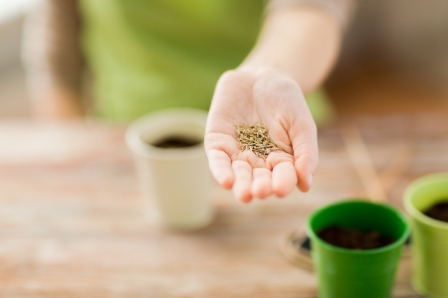
Experienced organic gardeners have been saving seeds for as long as they have been gardening. It may sound like a tiring exercise, but it offers numerous benefits. For instance, you save money that would have been used to purchase the seeds when planting season comes. Good quality seeds can be passed from one generation to another which helps protect biodiversity. You thrive by growing plants that are in sync with your garden soil and climate. These seeds will adapt over the years, grow better and offer better produce in an organic garden.
How to Save Seeds
Do not save all the seeds that have been grown. Choose seeds only from the best plants that were healthy and had good yields or vibrant flowers. Never save hybrid seeds; they have been created artificially and will yield inferior produce. Plants that reproduce through open pollination or cross pollination are the best for seed saving. They are non-hybrid and more reliable as long as they did not cross pollinate with other plants from a similar species.
Harvest the seeds on a sunny day and after the dew has dried. Remove all pulp and fiber. If you must, wash the slime off in a mild bleach mixture and lay the seeds on paper or towel to dry preferably under the sun. Shake plants like lettuce, dill and flowers that have seeds that scatter quickly over a paper bag daily until you have had enough seeds. Organic seeds for plants like beans, sunflower or pepper can be handpicked. Dry the seeds under the sun or at room temperature as long as possible. Make sure they are completely moisture-free before storing them.
Special Rules for Tomato Seeds
Tomatoes may require more preparation before saving. Slice the tomatoes at the middle and remove the seeds along with the rest of the content. Put the seeds in a container, add a few teaspoons of water and cover them with a plastic wrap. Poke a hole in the plastic wrap and place the container in a warm area like a windowsill. Stir the mixture daily for 2 to 3 days until it ferments. The fermentation process will kill diseases and bad seeds. Non-viable seeds will float while the good, viable seeds will sink to the bottom. Remove the non-viable seeds and pour the remaining mixture into a sieve. Rinse it with cold water and dry them on paper or towel.
Where to Save Seeds
Store seeds in a dry place because moist areas may cause them to grow mold. Use desiccant packs in plastic containers, glass jars or paper envelopes to keep the seeds dry for an extended time. Remember to label the containers or envelopes to differentiate the seeds. All seeds should be stored in a cool, dry and dark place until planting season arrives.
Saving organic garden seeds at the end of every growing season saves money and ensures a delicious harvest for the next year. Seed saving helps preserve plants that will flourish in your garden and also helps develop strains adapted to your local climate.
Background information for this article was provided by MCG Biocomposites. Visit their website at MCGBioMarkers.com.



Comment here